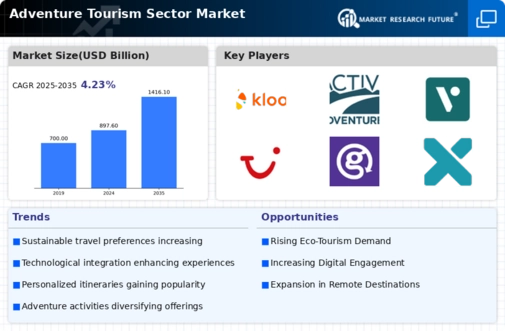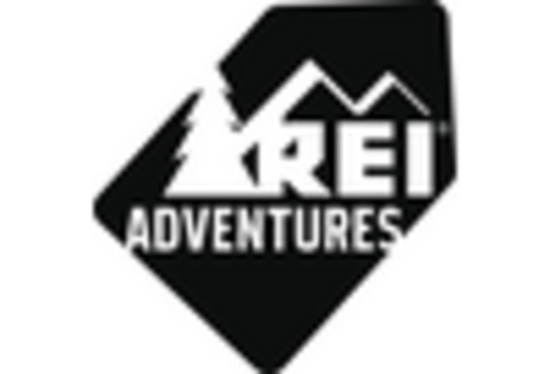Rise of Sustainable Practices
Sustainability emerges as a pivotal driver within the Adventure Tourism Sector Market. Travelers are increasingly prioritizing eco-friendly options, leading to a demand for responsible tourism practices. This shift is reflected in the growing number of operators adopting sustainable measures, such as minimizing carbon footprints and supporting local communities. Data indicates that around 60 percent of adventure tourists are willing to pay a premium for sustainable experiences. This trend not only aligns with the values of environmentally conscious consumers but also enhances the reputation of businesses committed to sustainability. Consequently, the Adventure Tourism Sector Market is witnessing a transformation, as operators integrate sustainable practices into their offerings, thereby attracting a broader audience and fostering long-term growth.
Growing Demand for Unique Experiences
The Adventure Tourism Sector Market is characterized by a growing demand for unique and personalized experiences. Modern travelers are increasingly seeking adventures that offer a sense of authenticity and connection to local cultures. This trend is evident in the rise of niche activities, such as culinary tours, wildlife safaris, and cultural immersion experiences. Data indicates that around 65 percent of adventure tourists prefer experiences that are distinct and memorable, rather than traditional sightseeing. This shift towards experiential travel compels businesses within the Adventure Tourism Sector Market to innovate and diversify their offerings, ensuring they meet the evolving preferences of consumers. As a result, operators are likely to develop more tailored experiences that resonate with the desires of adventure seekers.
Increased Interest in Outdoor Activities
The Adventure Tourism Sector Market experiences a notable surge in interest towards outdoor activities. This trend is driven by a growing awareness of health and wellness, as individuals seek physical challenges and mental rejuvenation through nature-based experiences. According to recent data, approximately 70 percent of travelers express a desire to engage in outdoor adventures, such as hiking, rock climbing, and kayaking. This inclination towards active travel not only enhances personal well-being but also fosters a deeper connection with the environment. As a result, businesses within the Adventure Tourism Sector Market are increasingly tailoring their offerings to meet this demand, providing diverse and immersive experiences that cater to the adventurous spirit of modern travelers.
Increased Accessibility to Remote Destinations
Accessibility to remote destinations significantly influences the Adventure Tourism Sector Market. Advances in transportation infrastructure, such as improved roads and increased flight routes, enable travelers to reach previously hard-to-access locations. This trend is particularly relevant as adventure seekers look for off-the-beaten-path experiences that offer solitude and natural beauty. Data suggests that the number of travelers visiting remote areas has increased by approximately 40 percent in recent years. This growing accessibility not only expands the market for adventure tourism but also encourages the development of new experiences in these areas. Consequently, businesses within the Adventure Tourism Sector Market are likely to capitalize on this trend by offering unique packages that highlight the allure of remote destinations, thereby attracting a diverse clientele.
Technological Advancements in Adventure Experiences
Technological advancements play a crucial role in shaping the Adventure Tourism Sector Market. Innovations such as virtual reality, mobile applications, and online booking platforms enhance the overall travel experience, making it more accessible and engaging. For instance, the integration of augmented reality in outdoor activities allows travelers to explore destinations in novel ways, enriching their adventures. Furthermore, data suggests that approximately 50 percent of adventure tourists utilize mobile apps to plan and enhance their trips. This reliance on technology not only streamlines the planning process but also provides valuable insights into local attractions and activities. As technology continues to evolve, the Adventure Tourism Sector Market is likely to see increased engagement and satisfaction among travelers, driving further growth.

















Leave a Comment